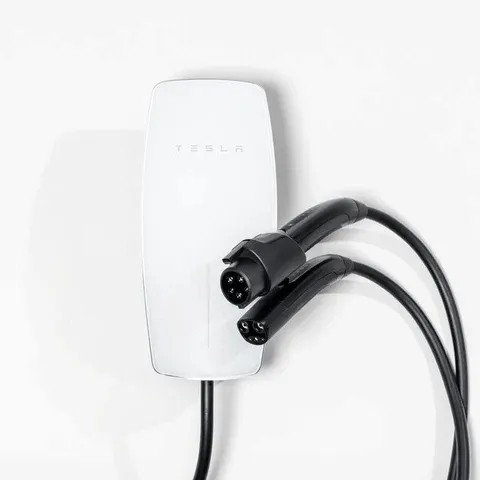Tesla EV Charging: A Complete Guide to NACS-Compatible Home Chargers
Introduction
LiCB Charge, a leading EV charger manufacturer in China, delivers reliable AC and DC electric vehicle charging stations along with comprehensive charging solutions.
As electric vehicles (EVs) continue their rapid rise in popularity, the need for fast, reliable, and convenient home charging solutions is more important than ever. For Tesla owners—and increasingly for drivers of other EVs compatible with the North American Charging Standard (NACS)—selecting the right home charger is key to maximizing both convenience and performance.
This guide explains what NACS is, explores its advantages, and walks you through how to choose the best NACS-compatible home charger based on your specific needs.
What is NACS?
The North American Charging Standard (NACS) is a proprietary EV charging connector developed by Tesla Inc. Originally launched in 2012, it was designed exclusively for Tesla vehicles but has since been opened for use by other automakers and charging networks. This move positions NACS as a strong contender to the Combined Charging System (CCS)—the most widely adopted connector in North America (CCS1) and Europe (CCS2).
Key Features of NACS
- Compact Design: NACS uses the same pins for both AC and DC charging, resulting in a smaller, more elegant plug compared to CCS.
- Integrated Power Delivery: Advanced electronics switch between AC and DC power modes safely and efficiently.
- Tesla Ecosystem: As of now, Tesla’s Wall Connector, Mobile Connector, Destination Chargers, and Superchargers are the only native infrastructure fully supporting NACS.
Non-Tesla EVs using the J1772 connector can access some Tesla charging equipment using a Tesla-to-J1772 adapter, though this currently applies only to AC charging.
Is a Home EV Charger Worth It?
Absolutely. While you can charge your EV with a standard 120V wall outlet (Level 1), it’s extremely slow—typically providing just 3 miles of range per hour. For most daily drivers, this is inadequate.
Why Install a 240V (Level 2) Charger?
- Faster Charging: Add up to 25–30 miles of range per hour.
- Cost-Efficient: Lower electricity rates at home—especially with off-peak scheduling—make charging cheaper than public stations.
- Convenience: Start every day with a full charge—no detours to charging stations.
Installing a Level 2 EVSE (Electric Vehicle Supply Equipment) transforms EV ownership into a seamless experience.
How to Choose the Best NACS Home Charger
1. Amperage
Amperage determines how quickly your EV can charge. Typical home chargers support:
- 40–50 amps: Suitable for most EVs.
- 80 amps: Premium models, faster charging—but requires a robust electrical panel.
Check your EV’s maximum AC charging rate and your home’s electrical capacity before investing in a high-amp charger.
2. Cable Length
Longer cables provide more flexibility, especially if your garage layout changes or if future vehicles have different charging port locations. Most cables range from 20 to 25 feet—go longer if possible.
3. Cable Management
A charger with built-in hooks or a separate wall-mounted holster helps prevent tangles, wear, and floor clutter. Good cable management is especially helpful in compact or single-car garages.
4. Size and Form Factor
Some units are bulkier than others. Measure your available space and consider a slim or wall-hugging design if your garage is tight or shared.
5. Smart Charging Features
Smart chargers offer app-based controls for:
- Scheduling charging during off-peak hours
- Monitoring energy usage
- Receiving alerts when charging is complete
- Integrating with home energy systems
If your vehicle doesn’t have its own smart app, a smart charger can add significant value.
6. Compatibility & Future-Proofing
While NACS is currently Tesla-specific, growing adoption means a NACS-compatible charger is a smart future investment. If you own or may switch to non-Tesla vehicles, consider:
- Chargers with interchangeable connectors
- Units that support both NACS and J1772 via adapters
7. Installation Requirements
Installing a Level 2 charger typically involves:
- Adding a 240V circuit
- Ensuring breaker and panel capacity
- Permits and code compliance
Always hire a licensed electrician, and check for local rebates or utility incentive programs to offset installation costs.
Top NACS-Compatible Home Chargers
Here are some leading options for home charging with NACS:
✅ Tesla Wall Connector
- Pros: Native NACS support, sleek design, up to 48 amps, smart features, Wi-Fi updates
- Cons: Limited compatibility with non-Tesla vehicles (adapter required)
✅ ChargePoint Home Flex
- Pros: Adjustable up to 50 amps, smart app control, broad brand compatibility with adapters
- Cons: J1772 connector requires an adapter for Tesla vehicles
✅ JuiceBox 40
- Pros: App-based controls, energy tracking, compact design
- Cons: Adapter needed for NACS use
Final Thoughts
Choosing the right NACS-compatible home charger isn’t just about speed—it’s about aligning with your lifestyle, vehicle, and future needs. From amperage and smart features to cable design and compatibility, investing in a quality charger ensures your EV is always ready to go.
Key Takeaways
- NACS is compact, efficient, and fast—ideal for Tesla and future-compatible vehicles.
- A Level 2 charger is significantly faster and more practical than a standard wall outlet.
- Consider your home's electrical capacity and potential installation costs.
- Look for smart features, flexible cable lengths, and robust build quality.
- Check for rebates or tax credits to lower installation expenses.
As NACS adoption expands, installing a capable home charger today means you're ready for the EV future. Whether you choose the Tesla Wall Connector or a third-party charger with adapter options, the comfort and efficiency of home charging will enhance your driving experience for years to come. Know more about Google SEO Directory





Comments